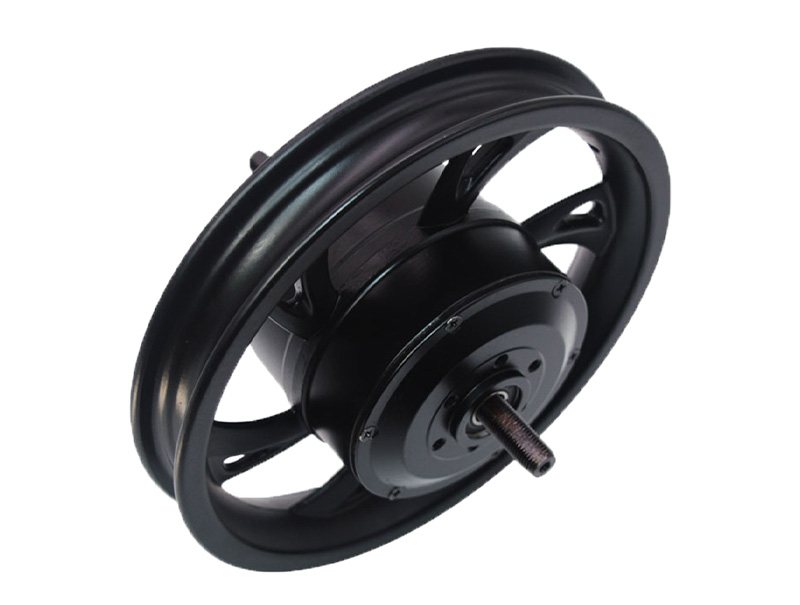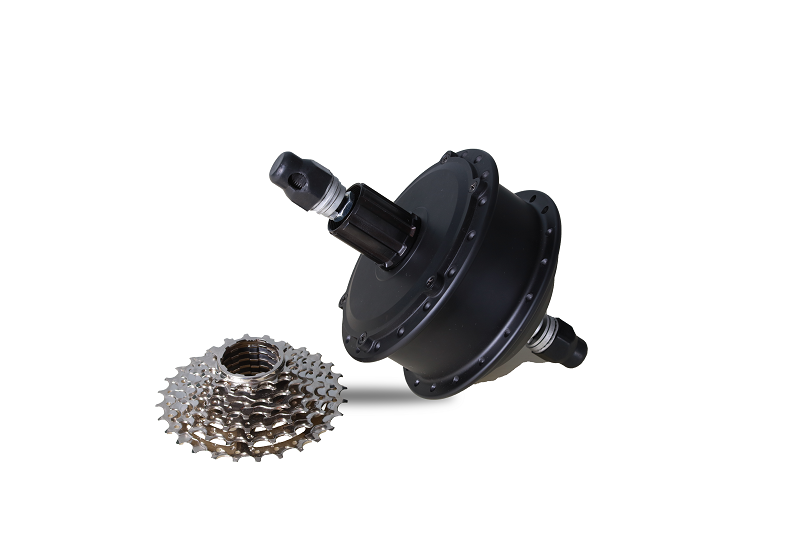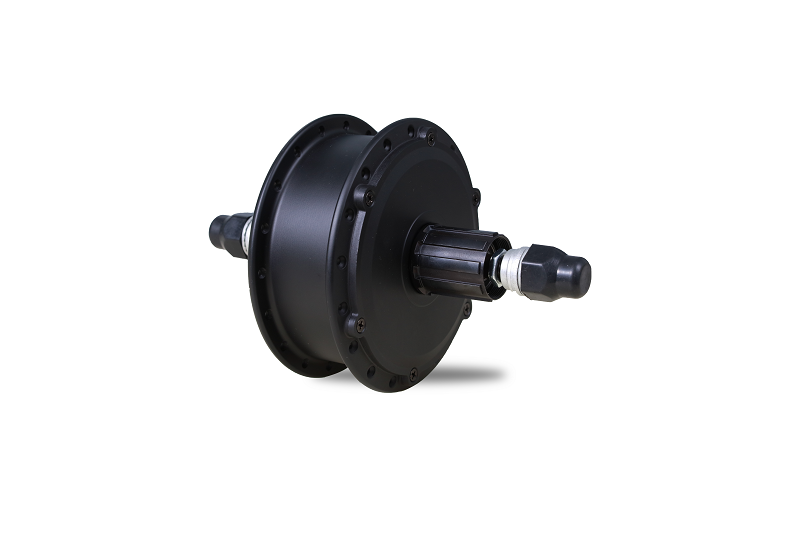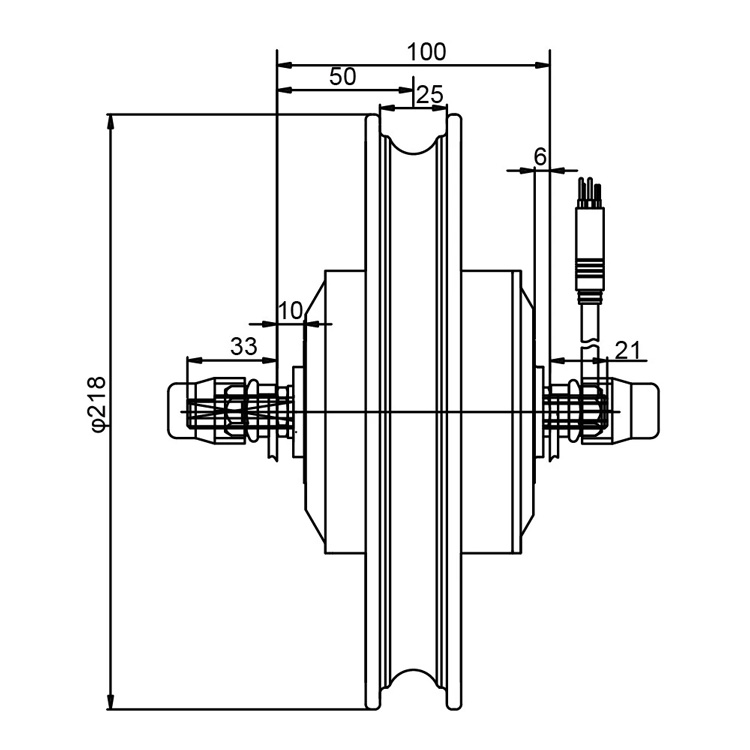News Categories
Electric bicycles are favored by urban and rural residents because they are economical and practical, easy to ride, and as non-motorized vehicles. After the rapid development in recent years, it has become quite popular. But at the same time, because it is a combination of electromagnetic, electrochemical, electronic and mechanical products with high technical content, while the working environment varies with the climate and different regions, uneven road bumps, wind and rain is a regular thing, sometimes users use improper, high failure rate is inevitable.
Let's talk about the 36V 250W electric bicycle motor magnet off fault repair methods and solutions.

1. The magnet and stator fixing method
At present, the 36V 250W electric bicycle motor is generally used in the permanent magnet DC motor. The so-called permanent magnet DC motor means that the inner stator of the motor uses permanent magnets to interact with the magnetic field generated by the outer rotor energized coil to generate torque and rotate the motor. The advantage of this design is that it eliminates the need to use the excitation coil to generate the magnetic field on the stator to consume electrical energy, which improves the efficiency of the 36V 250W electric bicycle motor and simplifies the structure of the motor, reducing the manufacturing cost of the motor, which can reduce the operating current and extend the driving range for electric bicycles that use limited energy on board.
The role of the magnet is to generate magnetic field, it is a permanent magnet, fixed on the stator, fixed with resin glue, this fixing method is low cost, easy to produce, is the commonly used way.

2. Disadvantages of resin glue fixing method
The method of fixing with resin glue is very firm, plus the magnetism of the magnets is very strong and can be tightly adsorbed on the stator core support. As the 36V 250W electric bicycle motor working environment is very harsh, in the humidity of the rainy weather and riding in the rain will inevitably have water or moisture into the stator core bracket is ferrous material, very easy to rust, generated rust between the magnet and stator core bracket expansion, propping up the magnet, resin glue will lose its proper role, relying only on the magnetic force of the magnet adsorbed in the stator core bracket, then there are bumps and rotor magnetic field force impact effect The magnet will be displaced, the light motor performance decline, the heavy motor sweep, the motor must be repaired.

3. Repair method
This type of failure repair method is to remove the 36V 250W electric bicycle motor, open the end cover, take out the stator, find out the detached or loose magnets, clean up the residual resin glue and rust, resin glue bonded magnets, reassemble the motor.
This kind of failure is now more common, and must be considered to reduce this kind of failure to start with, to fundamentally solve the problem of electric bicycle magnets falling off.

4. Solutions to solve the magnet shedding problem
One of the solutions is to use screws to fix it. Drill two holes in the magnet, and drill two holes in the corresponding position of the stator core holder and tapping, using countersunk head screws to fix each piece of magnet in the stator core holder, so that the magnet will not fall off the problem, we have tried to practice this idea on the motor with such a fault, because the magnet is too hard, with a common drill can not be punched in the magnet, to use this solution, only the 36V 250W electric bicycle motor and magnet manufacturer Coordinate and reserve two holes in the production process of the magnets so that the problem is solved. This solution may have the problem that the magnet steel has two more holes, affecting the magnetic induction strength of the stator, so that the magnetic field of the stator is not as strong as the original, as to how much weakening, to be confirmed and measured in practice.
The second solution is fixed with dovetail slot. The stator core holder is cast in a mold, just change the mold in the production process, leaving a dovetail slot in the stator core holder, then after mechanical processing, so that the size of the dovetail slot meets the design requirements and the whole stator concentric. Then the magnets are produced into dovetail shape, and when assembling, just insert the magnets into the slots along the axial direction, and solve the problem of fixing the magnets by mechanical tight fitting method. This method is easy to assemble the magnets as long as the casting mold is improved, eliminating the trouble of gluing the magnets with resin, not increasing the production cost, and the magnets will never fall off or loosen. Because the bumps and electromagnetic force on the magnet is radial and tangential, both directions are fixed with dovetail groove, there is no external force in the axial direction where the magnet can be moved, unless the force is artificial. When the magnetism of the magnet is weakened and needs to be replaced, the magnet can be easily removed by applying force along the axial direction, and the magnet can be easily magnetized or replaced.
Comparing these two design solutions, the second solution is superior because it only changes the mold, there is no effect on the magnetic field, and the magnets will never fall off or loosen, which also facilitates the solution of magnet demagnetization problem.